Numerous Image Processing and Computer Vision Projects ideas are progressing continuously are shared by us. Together with a concise summary, major goals, and the tools and approaches encompassed, we offer few effective project plans so read it out if you fce any research issues in writing, :
- Real-Time Face Detection and Recognition
Summary: To identify and diagnose faces in actual time from live video data, we construct a framework in such a manner that is suitable in safety and user authentication models.
Major Goals:
- Through the utilization of deep learning models or Haar cascades, it is appreciable to apply face identification.
- By implementing feature extraction methods, contrast the identified faces with a database of familiar faces for detecting the faces.
Tools and Approaches:
- MATLAB Toolboxes: Deep Learning Toolbox, Image Processing Toolbox, Computer Vision Toolbox.
- Methods: CNNs (Convolutional Neural Networks), Fisherfaces, Haar cascades, Eigenfaces.
Procedures:
- In order to identify faces in actual time, our team employs a pre-trained face detection framework.
- By utilizing techniques such as deep learning systems or Local Binary Patterns (LBP), it is appreciable to obtain characteristics.
- To identify faces, we compare characters with a pre-existing database.
Instance Code:
% Load pre-trained face detector
faceDetector = vision.CascadeObjectDetector();
% Read video feed
video = webcam;
while true
frame = snapshot(video);
bbox = step(faceDetector, frame);
if ~isempty(bbox)
frame = insertObjectAnnotation(frame, ‘rectangle’, bbox, ‘Face’);
end
imshow(frame);
pause(0.1);
end
- Image Segmentation for Medical Diagnosis
Summary: As a means to detect and divide interested areas, like organs or tumors in medical images, our team focuses on developing an image segmentation framework.
Major Goals:
- By employing approaches such as deep learning, thresholding, or clustering, it is appreciable to divide medical images into interested areas.
- The precision of segmentation must be assessed through the utilization of parameters such as Jaccard index or Dice coefficient.
Tools and Approaches:
- MATLAB Toolboxes: Deep Learning Toolbox, Image Processing Toolbox, Computer Vision Toolbox.
- Methods: Region-based segmentation, K-means clustering, U-Net.
Procedures:
- Through the utilization of normalization and filtering, we intend to preprocess medical images.
- As a means to segregate interested areas, it is beneficial to implement segmentation approaches.
- In opposition to ground truth data, our team focuses on assessing the segmentation precision.
Instance Code:
% Load a medical image
img = imread(‘medical_image.png’);
grayImage = rgb2gray(img);
% Apply a threshold to segment the image
binaryImage = imbinarize(grayImage, ‘adaptive’, ‘Sensitivity’, 0.4);
% Display segmented image
imshow(binaryImage);
title(‘Segmented Image’);
- Object Detection and Tracking in Video
Summary: In video data for applications such as traffic monitoring or surveillance, identify and monitor objects, like people or vehicles by constructing an appropriate model.
Major Goals:
- In every frame, we plan to identify objects through the utilization of deep learning or machine learning systems.
- To establish the activity and movement, our team aims to monitor objects among frames.
Tools and Approaches:
- MATLAB Toolboxes: Deep Learning Toolbox, Computer Vision Toolbox.
- Methods: SORT (Simple Online and Realtime Tracking), YOLO (You Only Look Once), Kalman filter.
Procedures:
- As a means to detect objects in every video frame, we intend to employ an object detection framework.
- A tracking method should be applied to adhere to objects among successive frames.
- It is approachable to investigate the movement trends and activities of monitored objects.
Instance Code:
% Load pre-trained YOLO detector
detector = yolov2ObjectDetector(‘YOLOv2-coco’);
% Read video file
videoFile = ‘traffic_video.mp4’;
videoReader = VideoReader(videoFile);
while hasFrame(videoReader)
frame = readFrame(videoReader);
[bboxes, scores, labels] = detect(detector, frame);
if ~isempty(bboxes)
frame = insertObjectAnnotation(frame, ‘rectangle’, bboxes, cellstr(labels));
end
imshow(frame);
pause(0.1);
end
- Hand Gesture Recognition for Human-Computer Interaction
Summary: In order to identify hand movements and utilize them for regulating computer interfaces or devices, our team constructs a model.
Major Goals:
- From video input, focus on identifying and dividing hands in actual time.
- Through the utilization of feature extraction and categorization, we intend to detect various hand movements.
Tools and Approaches:
- MATLAB Toolboxes: Deep Learning Toolbox, Image Processing Toolbox, Computer Vision Toolbox.
- Methods: HOG (Histogram of Oriented Gradients), CNNs, SVM (Support Vector Machine).
Procedures:
- As a means to identify and divide hands, we seize and preprocess video frames.
- From the segmented hand area, it is significant to obtain characters.
- By employing a trained machine learning system, focus on categorizing movements.
Instance Code:
% Capture video from webcam
video = webcam;
while true
frame = snapshot(video);
grayImage = rgb2gray(frame);
% Apply a skin color filter (example for simplicity)
binaryImage = grayImage > 100; % Threshold for simplicity
binaryImage = bwareafilt(binaryImage, 1); % Keep largest area
% Display the segmented hand
imshow(binaryImage);
title(‘Detected Hand’);
pause(0.1);
end
- Augmented Reality with Object Overlay
Summary: An augmented reality (AR) application has to be developed in such a manner which contains the capability to cover digital content within actual world objects. For entertainment or academic usages, it is determined as helpful.
Major Goals:
- In a video stream, we intend to identify and monitor actual world objects.
- Within the identified objects, cover virtual objects or data.
Tools and Approaches:
- MATLAB Toolboxes: Image Processing Toolbox, Computer Vision Toolbox.
- Methods: AR markers, Feature matching, homography estimation.
Procedures:
- It is appreciable to identify and monitor objects in actual time video stream.
- The location and arrangement of the object must be assessed.
- Across the monitored object, cover digital content.
Instance Code:
% Load a marker image
markerImage = imread(‘marker.png’);
% Read video from webcam
video = webcam;
while true
frame = snapshot(video);
% Detect features in the video frame
points = detectSURFFeatures(rgb2gray(frame));
[features, valid_points] = extractFeatures(rgb2gray(frame), points);
% Match features with marker image
markerPoints = detectSURFFeatures(rgb2gray(markerImage));
[markerFeatures, validMarkerPoints] = extractFeatures(rgb2gray(markerImage), markerPoints);
indexPairs = matchFeatures(features, markerFeatures);
% Display matched points
matchedPoints = valid_points(indexPairs(:, 1));
matchedMarkerPoints = validMarkerPoints(indexPairs(:, 2));
figure; showMatchedFeatures(frame, markerImage, matchedPoints, matchedMarkerPoints);
title(‘Matched Points’);
pause(0.1);
end
- Image Super-Resolution Using Deep Learning
Summary: To improve the determination of low-quality images, our team focuses on applying a deep learning framework. This is beneficial for applications in satellite photography or medical imaging.
Major Goals:
- Through the utilization of deep learning approaches such as GANs, or CNNs, we construct a super-resolution framework.
- The effectiveness of the system should be assessed by employing parameters like SSIM (Structural Similarity Index) and PSNR (Peak Signal-to-Noise Ratio).
Tools and Approaches:
- MATLAB Toolboxes: Image Processing Toolbox, Deep Learning Toolbox.
- Methods: GANs, SRCNN (Super-Resolution Convolutional Neural Network).
Procedures:
- By means of low-and-high-resolution image sets, our team plans to preprocess and augment the dataset.
- To learn the mapping from low to high determination, it is better to instruct a deep learning system.
- On undetected low-resolution images, we evaluate the framework. Focus on assessing the outcomes.
Instance Code:
% Load a pre-trained super-resolution model
net = load(‘trainedSRCNN.mat’);
% Read and resize a low-resolution image
lowResImage = imread(‘low_res_image.png’);
lowResImage = imresize(lowResImage, 0.5);
% Apply super-resolution model
highResImage = activations(net, lowResImage, ‘outputLayer’);
% Display the super-resolved image
imshow(highResImage);
title(‘Super-Resolved Image’);
- Autonomous Drone Navigation Using Computer Vision
Summary: Generally, a computer vision framework has to be constructed for drones to identify problems and direct in an automatic manner. For applications in search and rescue and farming, it is examined as valuable.
Major Goals:
- By utilizing computer vision, we identify and categorize problems in the path of the drone.
- In order to direct the drone in a safer manner around problems, it is approachable to utilize navigation methods.
Tools and Approaches:
- MATLAB Toolboxes: Robotics System Toolbox, Computer Vision Toolbox.
- Methods: Path planning, optical flow, object detection.
Procedures:
- From the drone’s camera, our team seizes video and preprocesses the images.
- It is appreciable to identify and categorize problems in actual time.
- As a means to prevent problems and adhere to a predetermined path, we aim to utilize a navigation method.
Instance Code:
% Load pre-trained object detection model
detector = yolov2ObjectDetector(‘YOLOv2-coco’);
% Read video stream from the drone
droneVideo = VideoReader(‘drone_video.mp4’);
while hasFrame(droneVideo)
frame = readFrame(droneVideo);
[bboxes, scores, labels] = detect(detector, frame);
if ~isempty(bboxes)
frame = insertObjectAnnotation(frame, ‘rectangle’, bboxes, cellstr(labels));
end
imshow(frame);
pause(0.1);
end
- Vehicle License Plate Recognition
Summary: In order to identify and diagnose vehicle license plates from images or video streams, our team develops a framework. Typically, in law enforcement and traffic management, it is examined as suitable.
Major Goals:
- In an image format, license plates have to be identified and decentralized.
- Through the utilization of OCR (Optical Character Recognition), we detect and obtain the text from identified license plates
Tools and Approaches:
- MATLAB Toolboxes: Computer Vision Toolbox, Image Processing Toolbox.
- Methods: OCR, Edge detection, region-based segmentation.
Procedures:
- As a means to improve the visibility of license plates, our team focuses on preprocessing images.
- It is appreciable to identify and divide the license plate region.
- To detect and obtain the text from the license plate, we intend to employ OCR.
Instance Code:
% Load and preprocess the image
img = imread(‘vehicle_image.jpg’);
grayImage = rgb2gray(img);
% Detect edges
edges = edge(grayImage, ‘Canny’);
% Find bounding boxes of connected components
[bboxes, labeledImage] = bwboundaries(edges, ‘noholes’);
% Perform OCR on the detected region
ocrResults = ocr(grayImage, bboxes);
plateText = ocrResults.Text;
% Display the detected license plate text
disp([‘Detected License Plate: ‘, plateText]);
What are the matlab toolboxes use to computer vision projects?
There are numerous MATLAB toolboxes, but some are examined as appropriate and efficient for computer vision projects. Including major characteristics and applications, we offer a collection of significant MATLAB toolboxes which are generally employed in computer vision projects:
- Image Processing Toolbox
Outline: For image analysis, visualization, and transformation, this toolbox offers an extensive scope of methods and functions.
Major Characteristics:
- Image Enhancement: For filtering, noise mitigation, and contrast alteration, this toolbox provides efficient functions.
- Geometric Transformations: It is capable of offering tools for rotating, resizing, and warping images.
- Image Segmentation: By employing approaches such as edge identification, thresholding, and morphological processes, techniques for partitioning images are contributed.
- Image Analysis: Specifically, for assessing features of image areas and objects, like shape, area, and perimeter, it offers functions.
Potential Applications:
- Images are preprocessed for more investigation.
- For efficient feature extraction, this toolbox focuses on improving image quality.
- In images, it partitions objects or interested areas.
Instance Functions:
grayImage = rgb2gray(img); % Convert to grayscale
filteredImage = imgaussfilt(grayImage, 2); % Apply Gaussian filter
edges = edge(grayImage, ‘Canny’); % Detect edges
- Computer Vision Toolbox
Outline: Mainly, for feature extraction, video processing, object identification, and video processing, computer vision toolbox offers effective methods.
Major Characteristics:
- Object Detection: In order to identify faces, vehicles, and other objects, this toolbox contributes pre-trained frameworks and functions.
- Feature Extraction: For obtaining and aligning characters, like ORB, SURF, and SIFT, it contains the ability to offer suitable methods.
- 3D Vision: It provides tools for point cloud processing, stereo vision, and 3D reconstruction.
- Video Processing: For writing, reading, and examining video documents, suitable functions are offered.
Potential Applications:
- Actual time object detection models have to be constructed through the utilization of computer vision toolbox.
- Carrying out 3D reconstruction and scene interpretation.
- For motion identification and monitoring, examine video sequences.
Instance Functions:
% Detect faces in an image
faceDetector = vision.CascadeObjectDetector();
bbox = step(faceDetector, img);
annotatedImage = insertObjectAnnotation(img, ‘rectangle’, bbox, ‘Face’);
imshow(annotatedImage);
% Extract and match features
points = detectSURFFeatures(grayImage);
[features, valid_points] = extractFeatures(grayImage, points);
- Deep Learning Toolbox
Outline: For designing, training, and implementing deep neural networks, this toolbox offers valuable tools.
Major Characteristics:
- Network Design: As a means to develop and alter deep learning infrastructures, like LSTMs and CNNs, the deep learning toolbox provides suitable functions.
- Training: By means of different optimization methods and learning plans, it offers tools for training neural networks.
- Pre-trained Models: For transfer learning and fine-tuning, it contributes permission to use systems such as ResNet, AlexNet, and VGG.
- Deployment: Mainly, for transferring frameworks to various environments and structures, appropriate functions are offered.
Potential Applications:
- For image categorization and segmentation, develop and train deep learning systems by means of the deep learning toolbox.
- Typically, for object identification and recognition, apply neural networks.
- To adjust pre-trained systems to certain missions, employ transfer learning.
Instance Functions:
% Load a pre-trained network
net = resnet50;
% Fine-tune the network on new data
layers = net.Layers;
layers(end-2) = fullyConnectedLayer(numClasses);
layers(end) = classificationLayer;
% Set up training options and train the network
options = trainingOptions(‘sgdm’, ‘InitialLearnRate’, 0.001, ‘MaxEpochs’, 10);
trainedNet = trainNetwork(trainingData, layers, options);
- Statistics and Machine Learning Toolbox
Outline: This toolbox offers beneficial tools for data visualization, statistical analysis, and machine learning.
Major Characteristics:
- Supervised Learning: Efficient functions are provided for instructing classifiers such as k-nearest neighbors, SVM, and decision trees.
- Unsupervised Learning: For clustering and dimensionality reduction, like PCA and k-means, this toolbox offers valuable tools.
- Model Evaluation: By employing parameters such as ROC curves, accuracy, and precision, functions for assessing model effectiveness are contributed.
- Data Visualization: As a means to investigate data, suitable tools are provided to develop histograms, scatter plots, and other visualization.
Potential Applications:
- For image categorization and regression, training machine learning frameworks by means of this toolbox.
- Clustering characters or images for experimental data analysis.
- Assessing and contrasting various methods of machine learning.
Instance Functions:
% Train a support vector machine classifier
SVMModel = fitcsvm(features, labels, ‘KernelFunction’, ‘linear’);
% Perform k-means clustering
[idx, C] = kmeans(data, 3);
% Evaluate model performance
cv = crossval(SVMModel);
accuracy = kfoldLoss(cv, ‘LossFun’, ‘classiferror’);
- Robotics System Toolbox
Outline: For robotics and autonomous systems, it offers tools for modeling and evaluating methods.
Major Characteristics:
- Robot Modeling: Generally, the robotics system toolbox provides functions for constructing and simulating robotic systems and kinematics.
- Sensor Integration: In order to combine sensors such as IMUs, cameras, and LiDAR, efficient tools are offered.
- Path Planning: For motion scheduling and obstacle avoidance, it contributes suitable methods.
- Simulink Integration: Typically, for actual time simulation and hardware implementation, this toolbox provides functions for incorporating with Simulink.
Potential Applications:
- For robots, vision-related navigation models have to be constructed with this toolbox.
- It simulates and assesses methods for autonomous vehicles.
- Generally, for missions such as object manipulation, combine computer vision with robotic models.
Instance Functions:
% Simulate a robot with a camera
robot = robotics.RigidBodyTree;
camera = vision.CameraParameters;
% Plan a path for the robot
planner = robotics.PRM;
startLocation = [0, 0];
endLocation = [10, 10];
path = findpath(planner, startLocation, endLocation);
- Signal Processing Toolbox
Outline: For investigating and processing signals such as videos and images, the signal processing toolbox offers convenient tools.
Major Characteristics:
- Signal Analysis: For investigating signal characteristics, like phase, frequency, and amplitude, the signal processing toolbox provides valuable functions.
- Filtering: To improve signals and eliminate noise, this toolbox offers tools for modeling and implementing filters.
- Transformation: For carrying out wavelet transforms, Fourier transforms, and other signal transformations, suitable functions are contributed.
- Time-Frequency Analysis: As a means to examine signals in the time and frequency disciplines concurrently, it provides effective tools.
Potential Applications:
- By means of filtering and noise mitigation, improving image quality in an effective manner.
- For motion identification, focus on investigating and processing video signals.
- Mainly, for feature extraction and analysis, converting image data.
Instance Functions:
% Apply a low-pass filter to an image
lpFilter = designfilt(‘lowpassiir’, ‘FilterOrder’, 8, ‘HalfPowerFrequency’, 0.2);
filteredImage = filtfilt(lpFilter, double(grayImage));
% Perform a 2D Fourier transform
fourierImage = fft2(double(grayImage));
- Parallel Computing Toolbox
Outline: In order to quicken computation-intensive missions, this toolbox offers tools for parallel computing.
Major Characteristics:
- Parallel Processing: For executing code on numerous GPUs or CPU cores, the parallel computing toolbox contributes suitable functions.
- Distributed Computing: To disseminate missions among a group of computers, effective tools are offered.
- Parallel Algorithms: For parallelizing methods such as matrix operations and simulations, it provides functions.
- GPU Acceleration: To accelerate computations, tools for utilizing GPU hardware are contributed.
Potential Applications:
- Quickening the training of deep learning systems.
- Accelerating the missions of image and video processing.
- Conducting extensive simulations and data analysis.
Instance Functions:
% Perform parallel processing
parfor i = 1:N
result(i) = someFunction(data(i));
end
% Use a GPU for computation
gpuArrayData = gpuArray(data);
result = someGpuFunction(gpuArrayData);
- Deep Learning Toolbox Model for AlexNet Network
Outline: A pre-trained AlexNet framework is offered for feature extraction and image categorization.
Major Characteristics:
- Pre-trained Model: It provides permission to use a system that is trained on millions of images.
- Transfer Learning: For conventional missions, it simply adjusts the framework with least data.
- Feature Extraction: Specifically, for other machine learning missions, employ the framework to obtain characters from images.
Potential Applications:
- Missions of image categorization with constrained labelled data.
- For clustering or dimensionality reduction, perform feature extraction.
- To adjust the framework to novel datasets and applications, employ transfer learning.
Instance Functions:
% Load AlexNet model
net = alexnet;
% Extract features from an image
img = imread(‘image.jpg’);
img = imresize(img, [227, 227]);
features = activations(net, img, ‘fc7’);
Image Processing and Computer Vision Project Topics
Image Processing and Computer Vision Project Topics along with implementation support will be directed for scholars. We have provided efficient project plans in computer vision as well as major MATLAB toolboxes which are employed by us in computer vision projects in an elaborate manner. The below specified details will be more beneficial and supportive , read it and stay in touch with us.
- Blimp based on Embedded Computer Vision and Fuzzy Control for Following Ground Vehicles
- Parametric modeling of 2.5D woven composites based on computer vision feature extraction
- Weed and crop species classification using computer vision and deep learning technologies in greenhouse conditions
- Automated as-built 3D reconstruction of civil infrastructure using computer vision: Achievements, opportunities, and challenges
- A visible-range computer-vision system for automated, non-intrusive assessment of the pH value in Thomson oranges
- A method for real-time measurement of respiratory rhythms in medaka (Oryzias latipes) using computer vision for water quality monitoring
- Visualizing stressful aspects of repetitive motion tasks and opportunities for ergonomic improvements using computer vision
- ViDAQ: A computer vision based remote data acquisition system for reading multi-dial gauges
- 3D Computer-vision system for automatically estimating heifer height and body mass
- Design of criteria to assess craniofacial correspondence in forensic identification based on computer vision and fuzzy integrals
- Experiences on developing computer vision hardware algorithms using Xilinx system generator
- Semi-supervised discriminative common vector method for computer vision applications
- Inspection of the distribution and amount of ingredients in pasteurized cheese by computer vision
- Inspection and grading of agricultural and food products by computer vision systems—a review
- An automated sign retroreflectivity condition evaluation methodology using mobile LIDAR and computer vision
- Simulation of Detecting Function object for AGV Using Computer Vision with Neural Network
- Cellular-phone-based computer vision system to extract shape properties of coarse aggregate for asphalt mixtures
- A damage detection system for inner bore of electromagnetic railgun launcher based on deep learning and computer vision
- Distributed training strategies for a computer vision deep learning algorithm on a distributed GPU cluster
- Towards automated progress assessment of workpackage components in construction projects using computer vision
Subscribe Our Youtube Channel
You can Watch all Subjects Matlab & Simulink latest Innovative Project Results
Our services
We want to support Uncompromise Matlab service for all your Requirements Our Reseachers and Technical team keep update the technology for all subjects ,We assure We Meet out Your Needs.
Our Services
- Matlab Research Paper Help
- Matlab assignment help
- Matlab Project Help
- Matlab Homework Help
- Simulink assignment help
- Simulink Project Help
- Simulink Homework Help
- Matlab Research Paper Help
- NS3 Research Paper Help
- Omnet++ Research Paper Help
Our Benefits
- Customised Matlab Assignments
- Global Assignment Knowledge
- Best Assignment Writers
- Certified Matlab Trainers
- Experienced Matlab Developers
- Over 400k+ Satisfied Students
- Ontime support
- Best Price Guarantee
- Plagiarism Free Work
- Correct Citations
Expert Matlab services just 1-click
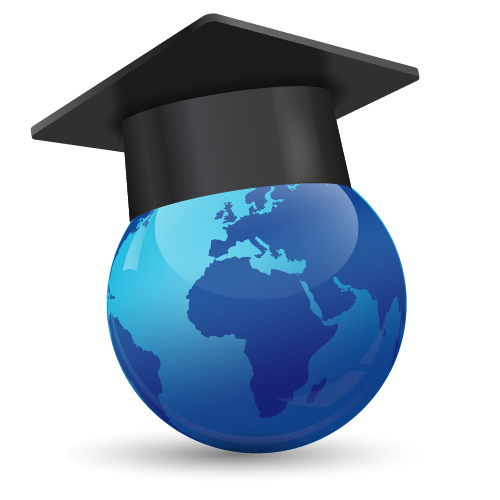
Delivery Materials
Unlimited support we offer you
For better understanding purpose we provide following Materials for all Kind of Research & Assignment & Homework service.
 Programs
Programs Designs
Designs Simulations
Simulations Results
Results Graphs
Graphs Result snapshot
Result snapshot Video Tutorial
Video Tutorial Instructions Profile
Instructions Profile  Sofware Install Guide
Sofware Install Guide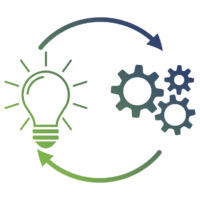 Execution Guidance
Execution Guidance  Explanations
Explanations Implement Plan
Implement Plan
Matlab Projects
Matlab projects innovators has laid our steps in all dimension related to math works.Our concern support matlab projects for more than 10 years.Many Research scholars are benefited by our matlab projects service.We are trusted institution who supplies matlab projects for many universities and colleges.
Reasons to choose Matlab Projects .org???
Our Service are widely utilized by Research centers.More than 5000+ Projects & Thesis has been provided by us to Students & Research Scholars. All current mathworks software versions are being updated by us.
Our concern has provided the required solution for all the above mention technical problems required by clients with best Customer Support.
- Novel Idea
- Ontime Delivery
- Best Prices
- Unique Work
Simulation Projects Workflow
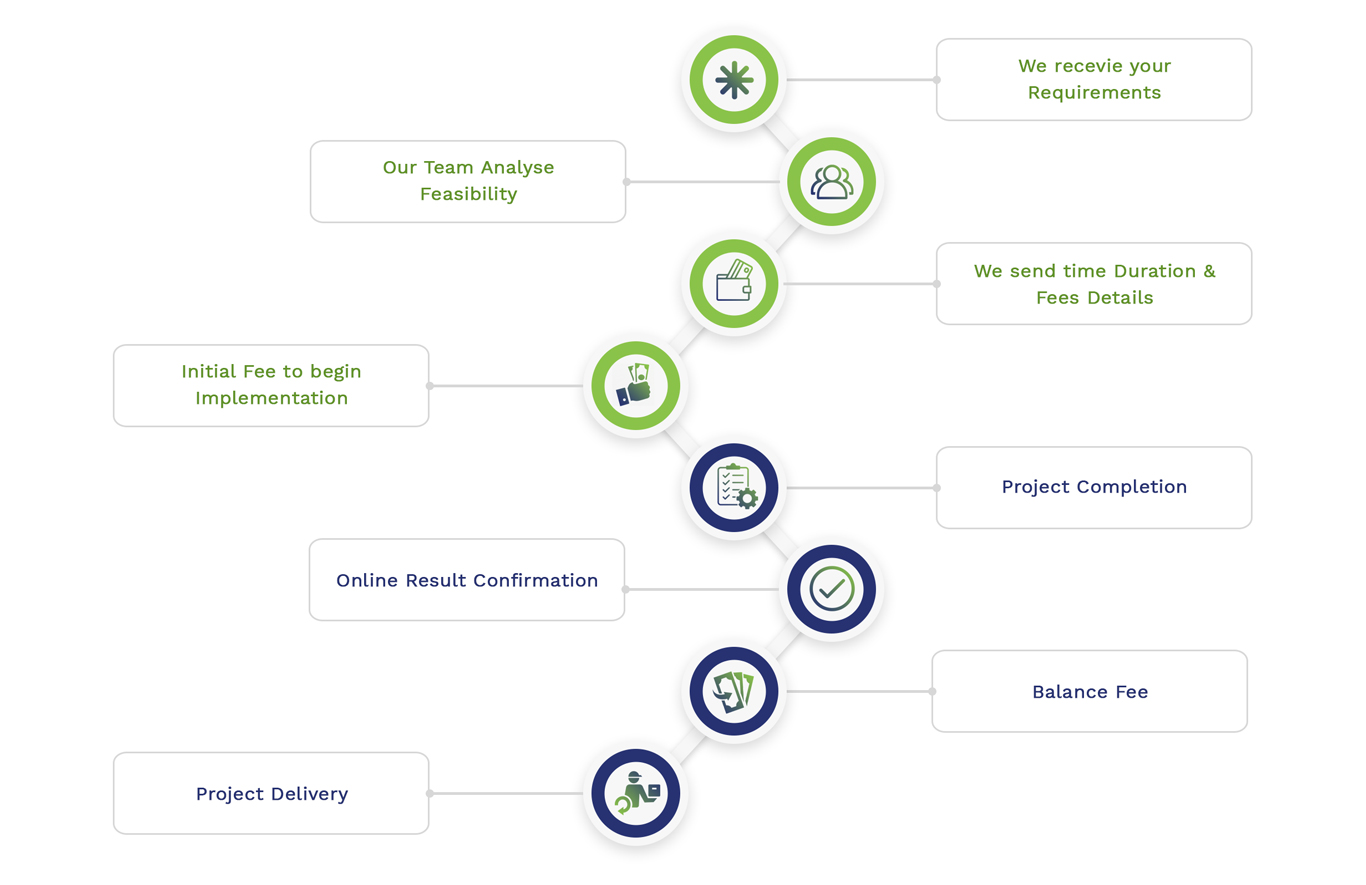
Embedded Projects Workflow
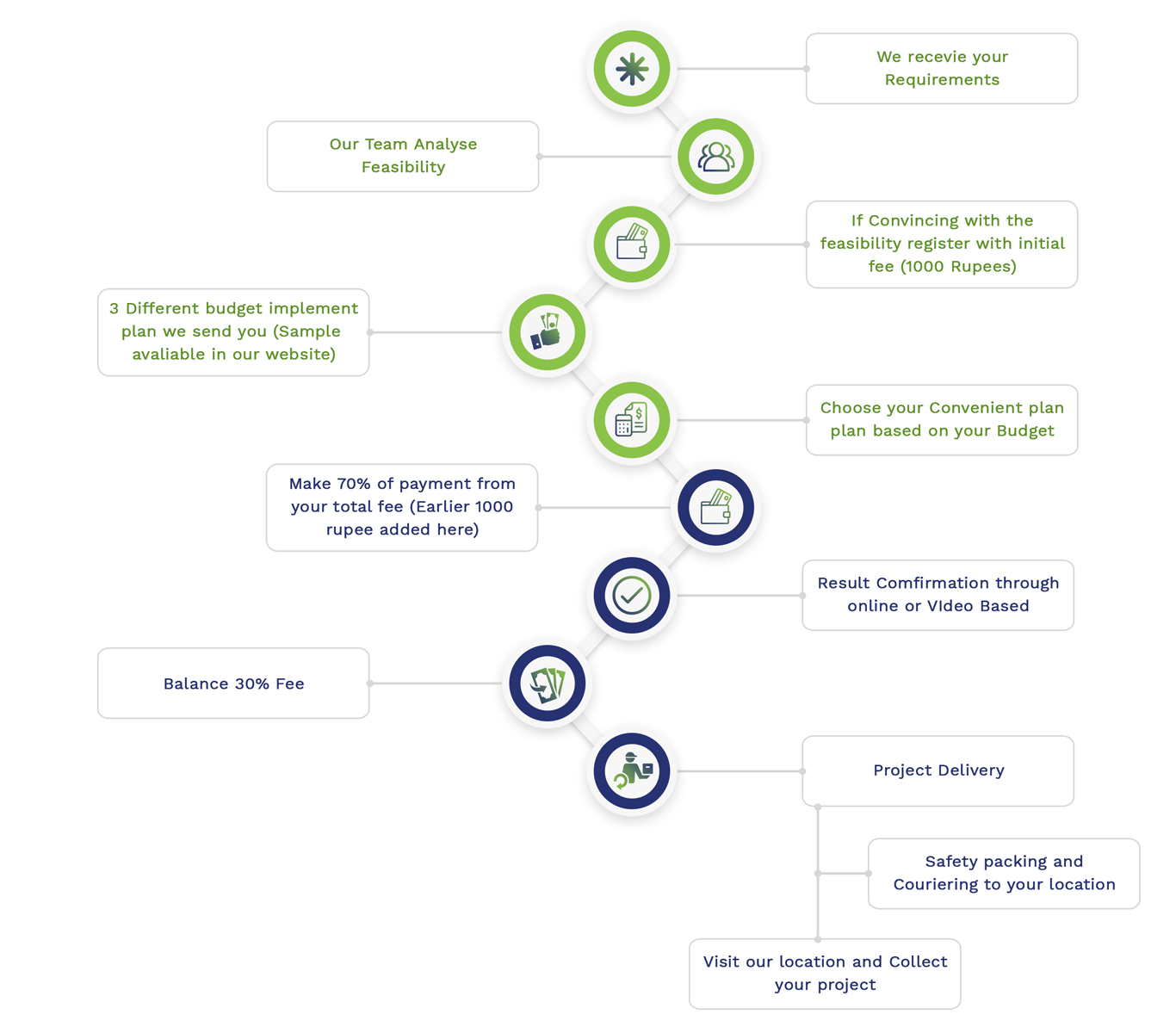

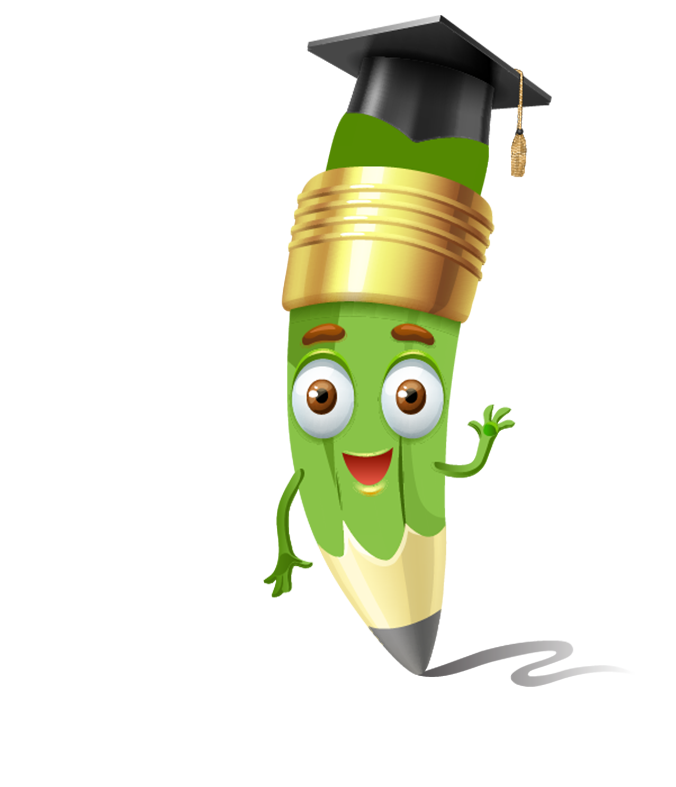
 Matlab
Matlab Simulink
Simulink NS3
NS3 OMNET++
OMNET++ COOJA
COOJA CONTIKI OS
CONTIKI OS NS2
NS2






